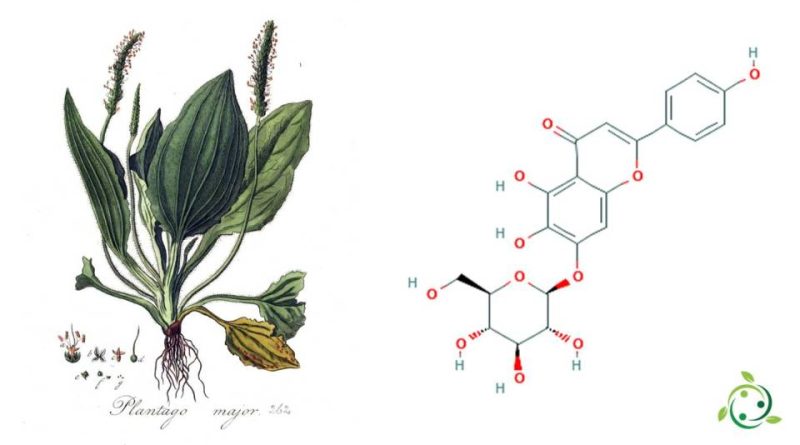Plantaginin
Plantaginin
Plantaginin, whose term in the official IUPAC nomenclature is: 5,6-dihydroxy-2- (4-hydroxyphenyl) -7 – [(2S, 3R, 4S, 5S, 6R) -3,4,5-trihydroxy-6 – (hydroxymethyl) oxan-2-yl] oxicromen-4-one is a glycosiloxiflavone found in the natural world.
Plantaginin has a brute or molecular formula: C21H20O11 and can be extracted from some plants and present in the broadleaf plantain (Plantago major L., 1753) which is a perennial herbaceous plant of the Plantaginaceae family and from which it can be extracted.
Plantaginin is a glycosiloxiflavone derived from scutellarin. It is a trihydroxyflavone and a monosaccharide derivative.
This substance as a metabolite of plant origin, plays a role within the plant and is the subject of some research on the matter, including for medicinal uses.
Warning: The information shown is not medical advice and may not be accurate. The contents are for illustrative purposes only and do not replace medical advice.

